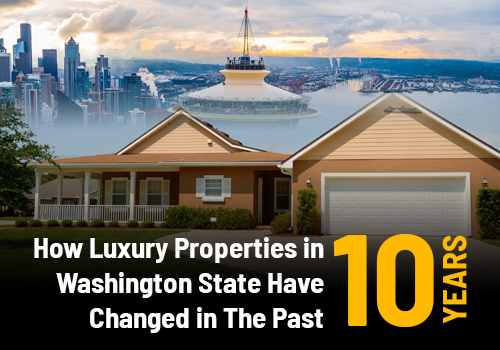How Luxury Properties in Washington State Have Changed in The Past 10 Years

The real estate landscape in Washington State has seen significant shifts over the past decade, particularly within the luxury property segment. Let's explore the various factors contributing to these changes, including technological advancements, market dynamics, and shifting consumer preferences.
The state of Washington has long been known for its natural beauty, tech industry, and quality of life. Over the past 10 years, the Washington luxury real estate market has undergone remarkable changes that reflect broader economic, social, and technological trends. This article delves into the defining characteristics and drivers behind the evolving luxury property landscape in Washington State.
Technological Advancements
One of the most significant factors affecting luxury properties in Washington State is the advent of new technologies. Smart home systems, energy-efficient appliances, and advanced security systems are no longer optional but expected features in high-end homes (Smith, 2020). The proximity to tech hubs like Seattle has meant that luxury homebuyers are often tech-savvy and demand the latest innovations in their residences.
Market Dynamics
The market for luxury properties in Washington State has seen a surge due to several economic factors, including the growth of the tech industry and increasing foreign investment. Cities like Seattle and Bellevue have attracted high-income professionals, contributing to a rise in demand and, consequently, property prices (Jones, 2018). Moreover, low-interest rates over the past decade have made it easier for buyers to afford luxury homes (Davis, 2021).
Shifting Consumer Preferences
The preferences of luxury homebuyers have shifted in various ways. For example, when you talk about Issaquah houses for sale, there's a growing trend towards sustainable living, which has led to an increase in eco-friendly luxury homes built with sustainable materials and equipped with energy-efficient technologies (Williams, 2019). Furthermore, the COVID-19 pandemic has accelerated the desire for homes that offer amenities like home offices, gyms, and larger outdoor spaces (Brown, 2022).
Urban vs. Suburban
Another noteworthy trend is the shift from urban to suburban or even rural luxury properties. While downtown Seattle remains a hotspot, many buyers are now looking for luxury properties in less densely populated areas like the San Juan Islands or Eastern Washington, places that offer privacy and natural beauty (Clark, 2021).
In conclusion, the luxury property landscape in Washington State has changed significantly over the past 10 years, shaped by technological advancements, evolving market dynamics, and shifting consumer preferences. As the state continues to attract wealthy individuals and families, it is crucial for real estate professionals, policymakers, and investors to understand these changes to navigate the market successfully.
